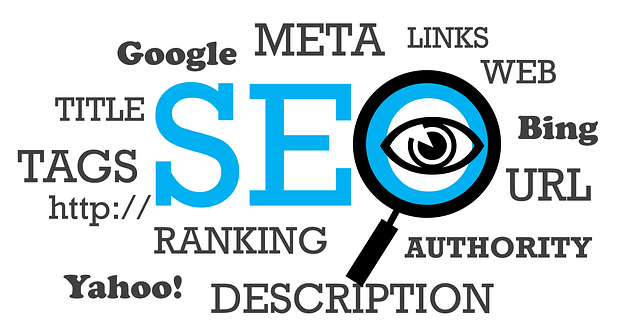
Step By Step Guide for Website Optimization

Website optimization is the foundation of positioning and the first step towards greater visibility in the Google search engine. That is why it is so important to devote as much time to it as needed. When it comes to optimization, we have 2 variants: a page with a history and a new website. Today we will deal with the second situation. We invite you to read!
Table of Contents
- SEO audit
- URL addresses
- Indexation and availability
- Optimization of Metadata
- Content and keywords
- Website structure
- Mobility
- Speed
- SEO audit
There are many optimization elements you need to consider. Therefore, the basis is that you have a sensibly planned strategy of action. It is best if you save the points in the form of checklists that you need to analyze and improve. The first step should be an SEO audit. This is a thorough analysis of the site from different angles.
The following tools will be useful for the audit:
- Screaming Frog,
- September,
- Woorank,
- Ahrefs,
- Google Speed Insight,
- GTmetrix,
- Google Mobile-Friendly.
1. URLs
If you create a large number of subpages on a page, it is important that you implement the so-called friendly URLs. What is this? They are simply logically arranged addresses containing words, not a string. It’s a good solution for both the user (UX) and Google robots.
Example:
Bad solution: yours – domain. EU / index. PHP? action = blog & p = 456 & title = offer – service
Good solution: your – domain. EU / offer / service
To sum up the URLs:
- Should not contain session IDs,
- Indexed by search engines must be static (dynamic links we reject),
- They should not be longer than about 120 characters.
2. Website Indexation and Availability
When a new website is created, you also need to study basic aspects, such as website indexation. Until Google finds your website via external links, the domain remains anonymous. And yet you want the site to appear immediately on the web. That’s why it’s worth reporting your site to Google using Google Search Console.
To do this, create an mail on Gmail, go to https://www.google.com/webmasters/tools/home?hl=en, add your website, download the file and place it in the main folder on the FTP server. You can also add GSC using Google Analytics or Google Tag Manager if you have already implemented it.
Go to your website in Google Search Console, click Download -> Download as Google and Download the homepage. After a few moments, Google knows that this type of website exists.
Also check if you have a robots.txt file with properly implemented commands and that the page code has no such type as “noindex”, “nofollow”.
3. Optimization of Metadata
Appropriate optimization of Metadata is one of the most important ranking signals for Google.
* Meta Title
This is the title of the page. It should contain keywords and should not be longer than 600 pixels. It must also be unique and encouraging to visit the site. There is no point in stuffing a large number of key phrases in it. The content on a given subpage is the optimal phrase saturation.
Example code: <title>SEO Services- Best SEO Company | ProfSEOServices</title>
* Meta Description
This is the page description under the title. Use key phrases in it, but above all briefly describe what is on the site and encourage them to visit them. You can use special characters that will make your domain stand out from other results. Use variations and a synonym for key phrases. This is important because Google highlights them in the results, and that catches the attention of the public.
Code example: <meta name=”description” content=”We are providing SEO services . ProfSEOservices is committed to providing the best possible digital marketing solution to its clients.
4. Content and keywords
Content, or content, are elements whose importance is constantly growing in SEO. Google loves the extensive, unique and tutorial content that it pushes up in search results.
On the pages of the content should have from 3000 to 5000 characters with spaces. That’s the right amount to cover a topic. It is also a large field for showing off when it comes to saturation with key phrases in various varieties and synonyms (in the age of Rank Brain it is not worth giving 1 to 1 key phrases that you care about).
The texts must be unique. This means that you cannot copy them from other sites or distribute the same content on other sites. This causes a duplication phenomenon that Google doesn’t like very much. Long texts allow displaying a long tail page – long tail, i.e. longer phrases – 3 words and more. Users type them less often, but they are less competitive. It so stresses free that the recipient who types them is aware of what they want to find.
Also, pay attention to optimize each subpage for a different group of key phrases. If you write 3 articles on similar subjects, fill them with the same phrase and additionally give them in meta tags, you can expect that Google will give once in the search results 1 article, the second time. Differentiate subject matter, metadata, article titles, and headlines.
Optimal content formatting is also important for the user. Use headings from h1 to h3, bold key information (not necessarily only key phrases), use calculations and bullets. Also, add photos with the alt attribute added.
The most common reasons for duplication inside the page:
- The home page is available at several addresses,
- The SSL certificate has been badly implemented and 301 redirects are not made,
- Duplicate meta tags
- Duplicate categories and tags (a common phenomenon on WordPress),
- Duplications when filtering, sorting – most often on online stores.
1. Internal linking – page structure
Internal linking is one of the most important steps in optimizing a website. Appropriate placement of links redirecting to your subpages is a way to transfer power from the main page, and also to make Google easier to reach all content on the site.
Number of Internal Links
Her sentences are divided but put in order not to add more than 200 links per page.
2. Internal link structure
- From the main page, link to a category or service,
- Links from category go to subcategories and to products/services,
- Link to categories from product pages,
- From blog articles link to offer pages on similar topics.
3. Linking from content
Content links are the strongest in terms of SEO. Use synonyms and synonyms. Also link between offer pages.
4. Links in the footer
It’s a good place to link places that you haven’t linked to in the top menu or from the content.
5. Linking a blog
Generate a place on the home page where you will promote e.g. the last 3 blog articles.
6. Website mobility
In the era of the Mobile-First index, it has become extremely important to adapt the site to all kinds of mobile devices. Make sure your site is mobile-friendly. You can check this at https://search.google.com/test/mobile-friendly
When it comes to website usability, make sure it is as fast as possible. For example, we advise against using sliders that may work on a PC. Also, use a font not smaller than 16 px. Make sure that all items are easily clickable, but not next to each other. The best rule is that the most important elements are as close as possible to the recipient’s thumb.
7. Website speed
This is another element that affects the position of your page on Google. It is fundamental that the site does not load for more than 3 seconds.
Take care of the following:
- Enable GZIP compression – it reduces response time by reducing the size of the HTTP response. You can add the appropriate code to the .htaccess file or install the plugin in your CMS.
- Enable caching – this is remembering the page in the browser in order to load it faster during subsequent visits. WordPress plugin WP Super Cache works well, but you can also add code to a .htaccess file.
- Optimization of graphics – it is often the case that optimization of the weight of photos on the portal significantly speeds up the website. You can do it manually, e.g. using the TinyPNG website or use plugins (in WordPress we recommend reSmush.it.
- HTML / JS / CSS minimization – the rule is simple – the fewer elements you load on the page, the faster it is. Minimization involves eliminating blank characters that take up space unnecessarily.
Of course, remember to choose proven and fast hosting. Helpful tools in the context of page speed optimization: GTMetrix Google Speed Insight website, Google Lighthouse.
Summary
As you can see, there are really many elements of website optimization. You need to consider the site’s architecture, mobility, speed, content and more. If you have questions about SEO, we are available!
If you are looking for Best SEO Services then there is the best option that you must choose Prof SEO Services a leading SEO firm.
FAQ – Frequently asked questions
1. What is website optimization?
Website optimization means adapting it to the current requirements of search engines. It involves comprehensive content, mobility, and speed as well as domain behavioral factors.
2. How much does website optimization cost?
The cost of website optimization is primarily related to the scope of work. If the website is small, then the costs will be much lower than in the case of an online store with thousands of products.
3. When to optimize the website?
Website optimization is a continuous process. It is not enough to make changes once. Algorithms are changing, competition is working, so this type of work must be approached cyclically.
















